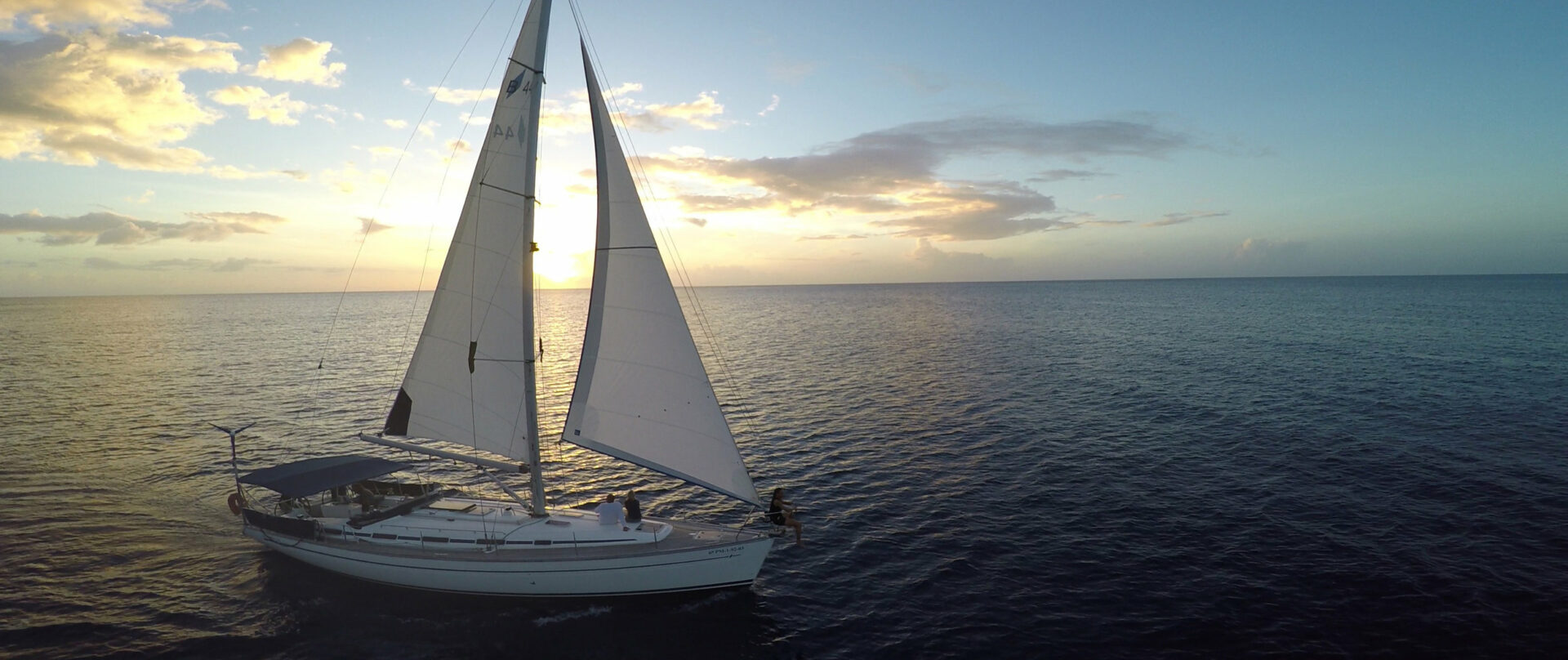In meteorology, the term “heat island” describes the way cities get hotter—and stay hotter—than the suburbs or countryside surrounding them. In New York, during the steamy days of summer, this explains why you need to turn your sights to other islands—Nantucket and Martha’s Vineyard being prime examples.
From either Westchester County Airport or Teterboro Airport, Tradewind flights can transport you to either of those alluring destinations off Cape Cod in just about an hour—wheels up to wheels down. You’ll have no TSA lines to slog through and all traffic jams are conveniently located 30,000 feet below.
So, okay, you’re sold on the idea—that was easy. But it leaves you with the choice of which island to book your flight to—and it’s a stimulating debate. Nantucket and the Vineyard (locals seldom include “Martha’s” in their toponym) actually have a yin-yang duality that seems to divide summer fun-seekers into two camps.

For cultural variety and more of a summer-revel vibe you would give the nod to MV. Visible on clear days from the Cape Cod town of Falmouth, Martha’s Vineyard makes sense, so to speak, to longtime Cape-goers.
For serenity, seclusion, and some one-percenter chic, punch your ticket to Nantucket. Even the shape of Nantucket Island—resembling the nose of an airplane pointed southwest and away from the mainland—befits what people say about its singular and separate feeling.
Although Nantucket is slightly larger in square miles, and has the ultimate cobblestone-paved port village, it doesn’t differ much from end to end. The Vineyard has many more villages and localities for you to see on a long bike ride, including Edgartown with its whaling-captain manses and just-so yacht club, Vineyard Haven with its boutique shopping and ferry-landing buzz, tucked-away Chilmark with its humble billionaires, and of course the historic town of Oak Bluffs, where gingerbread-style homes are passed down through the family trees of affluent, influential African-Americans. On the roadways connecting these hamlets you’ll pass farms and grazing pastures that may conjure thoughts of western Ireland.

Photo: Quinn Dombrowski
On a long bike ride down Nantucket roads, you’re more likely to experience a hypnotic descent into the simple beauty of pine trees, flower gardens, and narrow roads curving off into what must be idyllic properties. But keep riding out of town to the end of Polpis Road and prepare for panoramas of the bucolic Sankaty Head golf course and an inspiring lighthouse with a bold red stripe.
Year-round Vineyarders, like the online real estate entrepreneur David Lott, can sound dismissive when discussing Nantucket, due in good part to the “Beinecke factor.” That’s a reference to Walter Beinecke, a well-born New Yorker who almost single-handedly reinvented the island as an upscale haven for tourists and second-home owners in the mid-20th century. Beinecke spent childhood summers on Nantucket in the 1920s and ‘30s. It was then midway through a long, steady decline, never having replaced whaling as an economic base. The prim-and-pretty look that characterizes Nantucket today is based on building codes Beinecke pushed through, he being owner of most commercial properties and plenty of residences, too.
“There’s nothing wrong with weathered shingles, white trim, and picket fences covered in rambler roses,” comments Lott. “Martha’s Vineyard has those as well. But when it was done by fiat and it’s everywhere you look, well, it’s a little much.”

White Elephant
While the preservation process that unfolded on Nantucket may seem a bit firm-handed to a Vineyard devotee, to visitors it is delightfully welcome. Last summer was the first trip out there for Michael Corcoran, a New York publishing executive who reads a lot of history books and historical novels—including a recent run through whaling-industry chronicles.
“My wife and I thought about a trip to Martha’s Vineyard,” explains Corcoran, “but Nantucket always seemed that it was way out at sea, sort of unto itself.” The couple flew out to ACK—that’s not only the island airport’s abbreviation, but a code of sorts for Nantucket that shows up all over—and disappeared into luxury cottage accommodations at the famed White Elephant.
“It was 10 minutes by taxi from the airport to the start of our vacation, which turned out to be one of the most relaxing and fun trips I’ve ever been on,” he says. They rented a jeep, took boat trips, stared at seals basking en masse along the shore, and watched movies in the cottage at night. “You call the front desk and they deliver fresh popcorn while you’re watching your movie—that’s a nice touch,” recalls Corcoran.

The magic-carpet effect of a Tradewind flight from sultry New York to the fish shacks and fine restaurants of these two islands off Massachusetts is such that, once experienced, could well become a go-to for summer perfection.
Or, like many Tradewind flyers, at least take advantage of the offer twice—once for each island. That way you’ll never have to wonder if you made the right choice.

